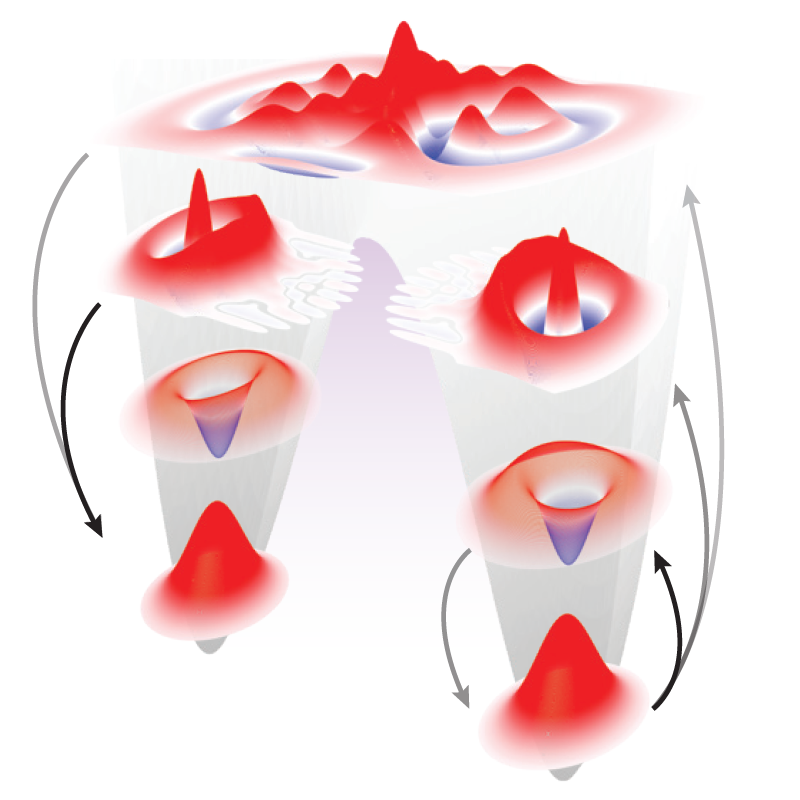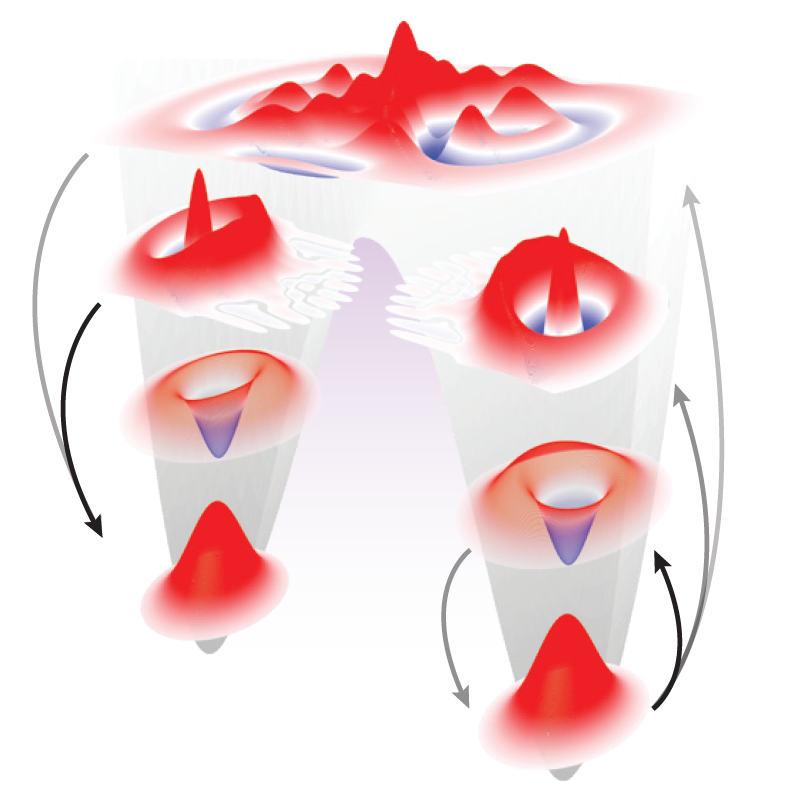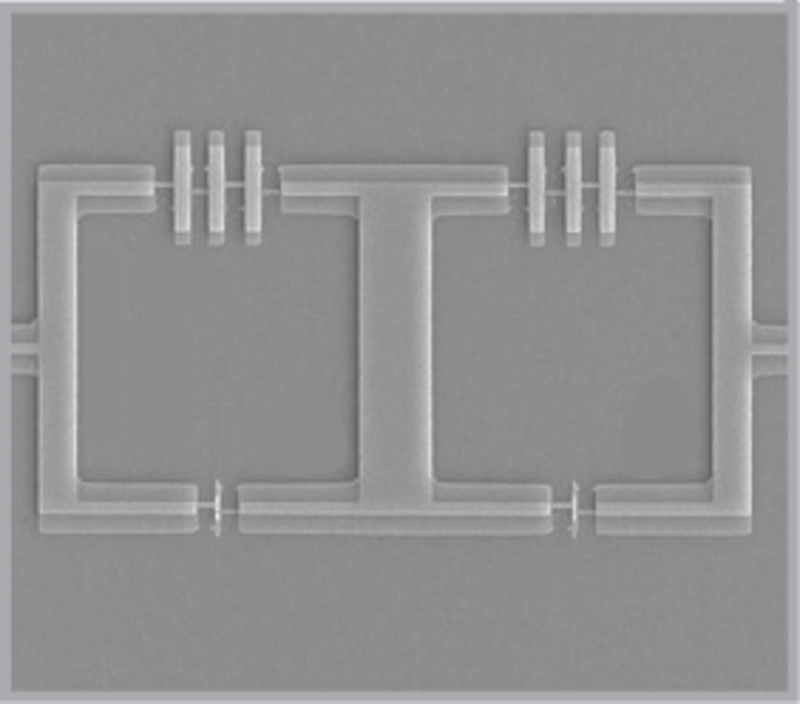New Quantum Effect in Textbook Chemistry Law
The Arrhenius law says that the rate of a chemical reaction should decrease steadily as you increase the energy barrier between initial and final states. Now researchers have found a system that obeys a quantum version of the Arrhenius law, where the rate does not drop smoothly but instead decreases in a staircase pattern [1]. The system is a type of quantum bit (qubit) that is particularly robust against environmental disturbances. The researchers demonstrated that they can take advantage of this quantum effect to improve the qubit’s performance.
Technologies such as quantum computers and quantum cryptography use qubits to store information, and one of the continuing challenges is that uncontrolled environmental effects can change the state of a qubit. The most common solutions require large amounts of hardware, but an alternative method is to use qubits that are more error resistant, such as so-called cat qubits. The information in these qubits is stored in robust combinations of quantum states that resemble the states in Schrödinger’s famous feline thought experiment (see Synopsis: Quantum-ness Put on the Scale).
Nicholas Frattini, Rodrigo Cortiñas, and their colleagues from Yale University previously developed a cat qubit design in which a superconducting circuit is driven by microwaves [2]. The current in the circuit oscillates, like a ball rolling back and forth in a valley, or “potential well.” For a certain driving frequency, the current can oscillate in one of two potential wells—called left and right—that are distinguished by being out of phase with each other.
The researchers can create two cat qubit states by generating oscillations that are quantum superpositions of both wells—where there is a certain probability for the qubit to be in either the left or the right well. With this setup, the team previously demonstrated a number of quantum logic gate operations, which are the basic elements of computing [2]. But one challenge has been “tunneling,” in which an oscillation switches spontaneously from one well to the other. The possibility of tunneling affects the superposition probabilities, limiting the lifetime during which the team’s qubit held information to around 100 µs.
To reduce such tunneling, the team has now modified their system, the main change being an increase in the amplitude of one of their microwave inputs. This modification causes a rise in the energy barrier between the wells. “We can engineer a double-well system and show how the tunneling effect gets suppressed as we make the barrier higher and higher,” Frattini says.
The researchers had expected the system to obey the Arrhenius law, which describes the rate at which a system makes transitions between two states separated by a barrier (usually called the activation energy). The law is modified for quantum tunneling, but the basic trend is that raising the barrier should cause a steady decrease in the tunneling rate [3]. “There was no real reason to mistrust that prediction,” Cortiñas says. But instead, to the team’s surprise, the tunneling rate dropped through a “staircase” of discrete steps.
The team explains this quantized Arrhenius behavior as the result of excited states in each well having a “ladder” of discrete energies. The action is dominated by the excited state with energy just at the level of the barrier. According to quantum mechanics, an oscillation in one well can climb in energy to this “barrier level” excited state and tunnel across from there. The rate of this tunneling goes down as the barrier height increases, but the situation changes when the barrier height reaches the next higher excited state, which then becomes the barrier level state, and a new step in the staircase appears.
Having identified the staircase and the role that the excited states play, the researchers showed that they could obtain lifetimes as long as 1 millisecond. Other research teams have engineered cat qubits with 1-second-long lifetimes, but their designs are not ideal for logic gates. “Our readout has much higher fidelity, and our gates are faster,” Frattini says.
Mark Dykman, from Michigan State University, has worked on the theory of barrier crossing in periodically driven quantum systems [4]. He says the Yale team has confirmed previous predictions for the behavior of such driven systems, but the team has explored a new regime where the well-switching rate displays unforeseen features of quantum fluctuations. He believes the results will have practical importance for quantum computing because a major obstacle for cat qubit designs has been unwanted tunneling. “Tunneling is evil,” he says. “This new work is a very important confirmation of the suppression of tunneling.”
–Michael Schirber
Michael Schirber is a Corresponding Editor for Physics Magazine based in Lyon, France.
References
- N. E. Frattini et al., “Observation of pairwise level degeneracies and the quantum regime of the Arrhenius law in a double-well parametric oscillator,” Phys. Rev. X 14, 031040 (2024).
- A. Grimm et al., “Stabilization and operation of a Kerr-cat qubit,” Nature 584 (2020).
- P. Hänggi et al., “Reaction-rate theory: Fifty years after Kramers,” Rev. Mod. Phys. 62 (1990).
- M. Marthaler and M. I. Dykman, “Switching via quantum activation: A parametrically modulated oscillator,” Phys. Rev. A 73, 042108 (2006).






